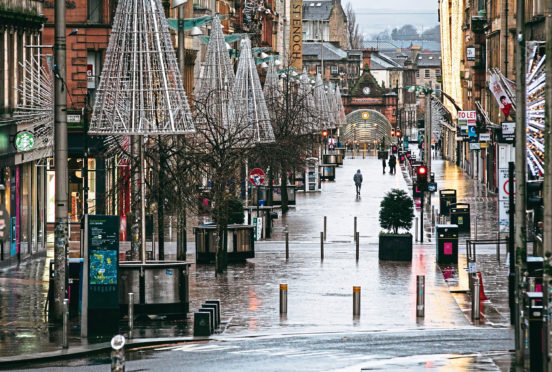
Lockdown restrictions are to be extended until at least the middle of February in Scotland, with schools remaining closed to the majority of pupils, Nicola Sturgeon has announced.
The First Minister told the Scottish Parliament that Covid-19 case numbers have “stabilised and even declined”.
But she said any relaxation of lockdown while cases remain high could “quickly send the situation into reverse”.
As a result, Scotland is to remain in lockdown until at least the middle of February and schools will also remain closed to most pupils.
Ms Sturgeon told MSPs: “That means that the lockdown restrictions – including the strict stay-at-home requirement – will remain in place across mainland Scotland and some island communities until at least the middle of February.”
She added: “The Cabinet decided today that – except for vulnerable and key worker children – school and nursery premises will remain closed until mid-February.”
The situation will be reviewed on February 2, the First Minister said, adding: “If it is at all possible, as I very much hope it will be, to begin even a phased return to in-school learning in mid-February, we will.”
Mainland Scotland was placed into lockdown on January 4 to tackle the rising spread of the new coronavirus strain.
The measures include a legally-enforceable stay-at-home order.
All non-essential shops, pubs, cafes, bars, gyms and hairdressers are closed and travel restrictions prevent anyone leavening their local authority area, with limited exceptions.
Schools were initially meant to emerge from Scotland’s second lockdown on February 1.
Ms Sturgeon also said all travel corridors with Scotland have been suspended.
With some limited sectoral exemptions, everyone arriving in Scotland now has to isolate for 10 days, no matter what country they are arriving from.
In addition, anyone travelling here must test negative for Covid no more than 72 hours before arrival.
Ms Sturgeon added: “We will continue to assess what restrictions are needed, and how they should be enforced, so that we can manage the risk of importing new Covid cases.”
The First Minister also told MSPs that Barra and Vatersay in the Western Isles will move from Level 3 of restrictions to Level 4 – the highest tier – at midnight on Tuesday.
This is due to a “significant outbreak” of Covid on the island.
Giving an update on vaccination numbers, Ms Sturgeon said that, assuming vaccine supplies meet expectations, Scotland will be “on track to be vaccinating 400,000 people a week by the end of February”.
She said more than 90% of care home residents, 70% of care home staff and 70% of all frontline health and care workers have received their first dose of a vaccine.
“That means that in around three months’ time, around three million people in total will have received at least the first dose of the vaccine,” she said.
“This is, of course, the majority of the adult population and includes everyone over the age of 50, and many younger people with an underlying health condition.”

Enjoy the convenience of having The Sunday Post delivered as a digital ePaper straight to your smartphone, tablet or computer.
Subscribe for only £5.49 a month and enjoy all the benefits of the printed paper as a digital replica.
Subscribe